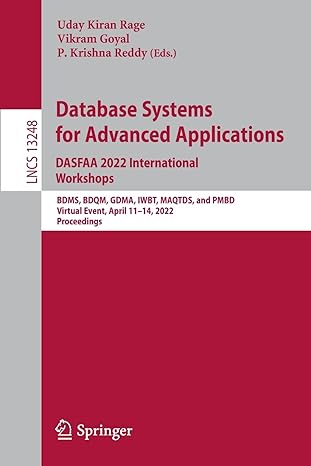Answered step by step
Verified Expert Solution
Question
1 Approved Answer
Solving this problem will likely be easier after Friday s Review Session, and even more so after Monday s lecture . Or you could read
Solving this problem will likely be easier after Fridays Review Session, and even more so after Mondayslecture Or you could read ahead in the textbook on the analysis of the Earliest Deadline FirstalgorithmIn this problem, we will look at how to manipulate the outcome of an election. In many elections,voters can only vote for one candidate if so there is really only one reasonable voting rule, whichis to choose the candidate with the largest total. But as you probably know, this leads to a lot ofspeculating to avoid wasting ones vote on a candidate who wont win anyway. For that reason,some elections ask voters to rank all candidates from most favorite to least favorite; with this extrainformation one can then do a better job picking a good candidate. There are a lot of differentvoting rules for choosing a candidate you may have heard about Single Transferable Vote STValso known as Ranked Choice voting. Another wellknown method, and the one we will consider here,is the Borda Count, named after JeanCharles de Borda, who invented it in the late th century.Assume that there are m candidates and n voters. Each voter ranks all m candidates from mostto least favorite. For voter v n their order is a permutation pi v and we write pi vi for thecandidate that voter v has in position i Voter vs most favorite candidate is pi v and their leastfavorite is pi vm Under the Borda count rule, candidate c gets m points for each firstplace votethey get, m for each secondplace vote they get, and so on; with points for each lastplace votethey get. The points are added up and the candidate with the largest total number of points winsAs an example, suppose that there are three voters and four candidates, and the rankings of the votersare ABCDBC ADCD AB Because m candidate A gets points, Bgets points, C gets points, and D gets points. Here, C wouldwinNow assume that you are voter n and your favorite candidate would be A You would like A to win.You can see all the ballots of all other voters. The question is: is there some ranking you can puton your ballot such that A is the unique winner, ie A gets strictly more points than every othercandidate no ties Clearly, sometimes this will be impossible, and other times, it is possible. Forinstance in the example above, if you were the fourth voter, you could write ABDC on the ballot,and now, A would have points, B would have points, C would have points, and D would haveLets not worry about tie breaking for now. points, so A would win. On the other hand, if everyone else had ranked A last and B first, therewould have been nothing you could doGive a polynomialtime algorithm to compute a ballot you can submit to make A win, or correctlyconclude that no such ballot exists. Prove the correctness of your algorithm, and analyze its runningtime
Step by Step Solution
There are 3 Steps involved in it
Step: 1

Get Instant Access to Expert-Tailored Solutions
See step-by-step solutions with expert insights and AI powered tools for academic success
Step: 2

Step: 3

Ace Your Homework with AI
Get the answers you need in no time with our AI-driven, step-by-step assistance
Get Started


